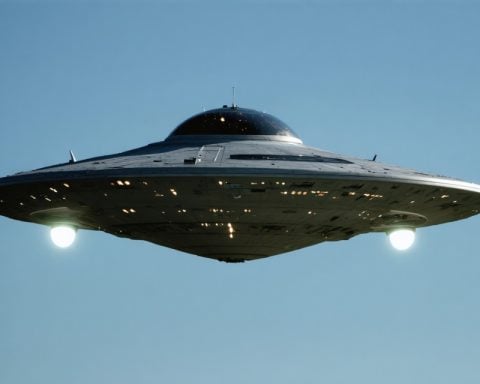The Countdown Has Begun!
The Indian Space Research Organisation (ISRO) is on the brink of a historic milestone as it prepares for its 100th launch from the iconic Satish Dhawan Space Centre in Sriharikota. The upcoming GSLV-F15 mission is poised to deploy the indigenous navigation satellite NVS-02, an integral part of the ‘Navigation with Indian Constellation’ (NavIC) system.
NVS-02, the second satellite in its series, is equipped with advanced navigation payloads in L1, L5, and S bands, paralleling the capabilities of its predecessor, NVS-01. This satellite, utilizing a robust I-2K bus platform, has a lift-off mass of 2,250 kg and a power-handling capacity of 3 kW. It will take its position at 111.75ºE, effectively replacing the former IRNSS-1E.
To achieve exceptional precision in time estimation, NVS-02 incorporates a blend of homegrown and procured atomic clocks. Notably, NVS-01 was the first in this new generation, successfully launched on May 29, 2023, marking a significant leap for Indian satellite technology.
NavIC aims to deliver accurate positioning, velocity, and timing services across India and its surrounding regions, extending service up to 1,500 km beyond the country’s borders. With five additional second-generation satellites planned, the NavIC system is set to enhance its service continuity and operational reach. The satellite was recently transported to SHAR, and preparations are underway for its launch scheduled on January 29.
The Broader Implications of India’s Space Odyssey
The imminent launch of the NVS-02 satellite by ISRO not only celebrates a technological achievement but also heralds broader societal and economic ramifications. As India inches closer to becoming a significant player in the global space race, the successful deployment of NavIC satellites amplifies its strategic position in the arena of satellite navigation. Accurate positioning and timing services provided by NavIC will enhance sectors such as transportation, agriculture, and telecommunications, fostering economic growth and improving societal infrastructure.
In terms of cultural impact, the advancement of India’s space capabilities fuels national pride and inspires a burgeoning interest in STEM fields amongst the youth. As more students and professionals engage with space technology, the potential for innovation grows—transforming India into a knowledge hub, attracting foreign investment, and promoting technological collaboration.
On the environmental front, the increasing number of satellites poses challenges, particularly in debris management and sustainable space utilization. Balancing exploration with preservation becomes imperative to mitigate long-term atmospheric and ecological impacts. Future trends indicate a push toward eco-friendly satellite technologies, potentially transforming how countries approach space missions.
As the world shifts to reliance on an interconnected global economy, India’s emphasis on an indigenous navigation system reflects broader trends in self-reliance and technological independence. Therefore, the ongoing journey of ISRO not only underscores India’s capabilities but also hints at the transformative power of space technology in shaping future societies and economies.
ISRO’s Next Milestone: What You Need to Know About the GSLV-F15 Mission
Overview of the GSLV-F15 Mission
The Indian Space Research Organisation (ISRO) is gearing up for a momentous occasion as it approaches its 100th launch from the Satish Dhawan Space Centre in Sriharikota. This significant event will feature the GSLV-F15 mission, tasked with deploying the indigenous navigation satellite NVS-02, part of the ‘Navigation with Indian Constellation’ (NavIC) system. This article will delve into the features, specifications, and implications of this critical mission.
Key Features of NVS-02
NVS-02 is the second satellite in a series designed to enhance India’s navigation capabilities. Some of its standout features include:
– Advanced Navigation Payloads: It operates in L1, L5, and S bands, aiming to deliver robust navigation services.
– Robust I-2K Bus: Built on an innovative platform, the satellite has a lift-off mass of 2,250 kg and a power capacity of 3 kW.
– Precision Clocks: NVS-02 integrates a mix of domestic and overseas atomic clocks to ensure high accuracy in time keeping, crucial for navigation.
Specifications
– Launch Date: Scheduled for January 29, 2024.
– Deployment Orbit: Positioned at 111.75ºE.
– Service Area: Offers services up to 1,500 km beyond Indian borders.
Use Cases and Applications
The primary purpose of NavIC, supported by the launch of NVS-02, includes:
– Accurate Positioning Services: Beneficial for sectors such as agriculture, transportation, and urban planning.
– Disaster Management: Enhances capabilities for real-time monitoring and response during natural calamities.
– Defense Applications: Provides strategic advantages to the Indian armed forces through precise navigation.
Pros and Cons
Pros:
– Enhances India’s autonomous navigation capabilities.
– Improves accuracy and reliability of positional data.
– Supports various sectors including defense, transportation, and telecommunications.
Cons:
– The extensive infrastructure development needed for a fully operational NavIC system.
– Dependency on both indigenous and foreign technologies for certain components.
Current Trends and Innovations
The upcoming launch signifies India’s dedication to expanding its space program, aiming to be a formidable player in global satellite navigation systems. As more country-specific systems arise, ongoing advancements in satellite technology and navigational algorithms will likely drive international collaborations and competition.
Security Aspects
As NavIC expands capability, security measures surrounding satellite technology will remain a vital concern. Enhanced security protocols are critical to protect this strategic asset against potential cyber threats and ensure the integrity of navigation data.
Pricing and Market Analysis
While the exact budget for the GSLV-F15 mission remains undisclosed, ISRO’s previous launches have highlighted a commitment to cost-effective space exploration. As the demand for navigational satellites grows globally, India’s investment in NavIC technology may position ISRO as a provider of navigation services internationally, paving the way for collaborations and contracts.
Conclusion
As ISRO approaches this ambitious milestone, the successful launch of NVS-02 could reshape India’s navigation landscape and symbolize a significant leap in indigenous satellite technology. The anticipated advancements from this mission will not only bolster India’s capabilities but also contribute to global navigational efforts. Stay tuned for more updates as the mission date approaches.
For more on future ISRO missions, visit ISRO.

















